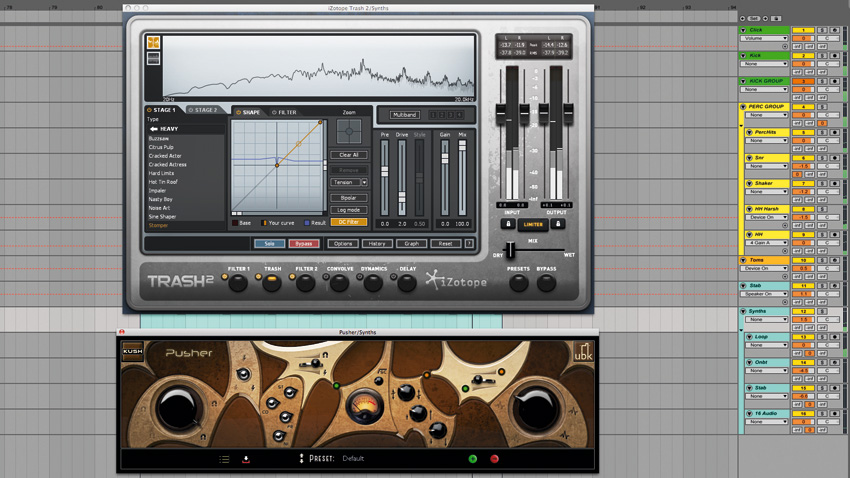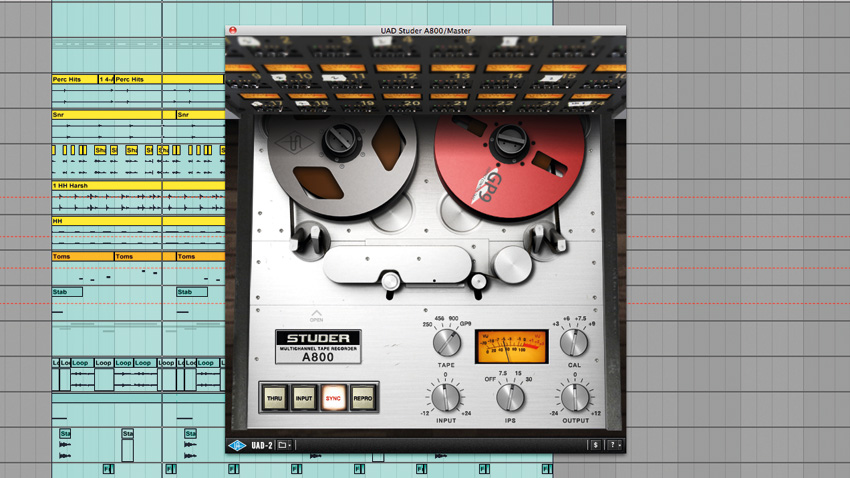6 steps to warming up a digital mix
Reduce the harshness of a digital mixdown with these analogue-inspired distortion techniques

One of the very few downsides of modern digital music technology is that, obviously, it doesn't automatically deliver the eternally desirable, ear-pleasing warmth of analogue gear.
One of the many upsides of modern digital music technology, however, is that it gives us the means by which to emulate valve- and transistor-based hardware, and magnetic tape, giving you everything you need to sprinkle a little of that quasi-magical flavour enhancement over your tracks
In this walkthrough, we'll show you how to apply a variety of saturating and distorting plugins to a 100% digital mix in order to add beneficial harmonics, warm things up and generally make the whole affair sound convincingly 'analogue'.
For much more saturation- and distortion-related tomfoolery, be sure to pick up issue 285 of Future Music, which is on sale now.

Step 1: Here's a 128bpm house track. The mix is relatively balanced, but its overall cohesion, tone and weight could be improved with touches of warmth. Let's start with the kick buss. We've loaded Native Instruments' Driver over the group - turning up the Input pushes the two kick layers into the plugin's drive stage. This adds subtle harmonics, gelling the two layers together as one. We pull down the Output knob to compensate for level increase caused by the drive.
Dry mix
Dry kick
Get the MusicRadar Newsletter
Want all the hottest music and gear news, reviews, deals, features and more, direct to your inbox? Sign up here.
Kick with subtle distortion

Step 2: To tame the crack of the sharp snare, we apply a liberal dose of tape saturation with u-he's Satin plug-in. This reduces the snare's peak level by roughly 5dB, claiming back mix headroom while adding a touch of fizz and weight. The toms provide weight and groove between the kicks, but the groove is made up of separate samples. Tape saturation, added via FabFilter Saturn, crunches these hits together as one, adding harmonics and levelling the sounds.
Dry snare
Snare with tape saturation
Dry toms
Toms with tape saturation

Step 3: Electronic hi-hats can sound overly bright; distortion will remove digital harshness. Here, the UAD Moog Filter plugin's drive stage is adding grit to these hats. The plugin's filter also rolls off top-end, but we've pulled back the Mix knob to blend this filtered signal with the dry signal. Saturation and distortion can add unwanted rumble, so this is rolled off with EQ. Frequency analysis shows us the extra upper-mid harmonics that our distortion has added.
Dry hats
Hats with drive and EQ

Step 4: Tape saturation from Slate Digital's VTM smoothly glues our drum group together, invisibly chopping off sharp peaks. Then the UAD API Vision Channel Strip's preamp gain is pushed hard. These processes are barely audible, but gently roll off highs, reduce harsh transients and glue things together. Two oscilloscope plug-ins - one on either side of the two drive plugins - show how we've gained headroom and smoothly clipped transients without noticeable artifacts.
Dry percussion buss
Percussion buss with saturation

Step 5: Our synth parts are rather dull and clean. To remedy this, we've added an instance of iZotope's Trash 2 across the synth group. An extreme waveshaping preset applies wild, squealy distortion to the channel, which we can rein in by mixing the dry signal back in, adding top-end fizz in the mix without overpowering the sound's original character. A touch of unique saturation from Kush Audio's Pusher further levels out the synth loop in a harmonically pleasing way.
Dry synths
Distorted synths

Step 6: To finish off the mix, the UAD Studer A800 is loaded over the master output, emulating the process of running the mix hot to tape. This saturation tames transients in a more musical way than compression or limiting, while adding harmonic weight to the lows of the kick and toms. When A/Bing the original track with the newly-processed version, our various drive stages add subtle glue and punch - with the added bonus of peak and dynamic control.
Dry mix
Final mix with no master processing
Final mix with tape saturation
Future Music is the number one magazine for today's producers. Packed with technique and technology we'll help you make great new music. All-access artist interviews, in-depth gear reviews, essential production tutorials and much more. Every marvellous monthly edition features reliable reviews of the latest and greatest hardware and software technology and techniques, unparalleled advice, in-depth interviews, sensational free samples and so much more to improve the experience and outcome of your music-making.
"If I wasn't recording albums every month, multiple albums, and I wasn't playing on everyone's songs, I wouldn't need any of this”: Travis Barker reveals his production tricks and gear in a new studio tour
“My management and agent have always tried to cover my back on the road”: Neil Young just axed premium gig tickets following advice from The Cure’s Robert Smith










